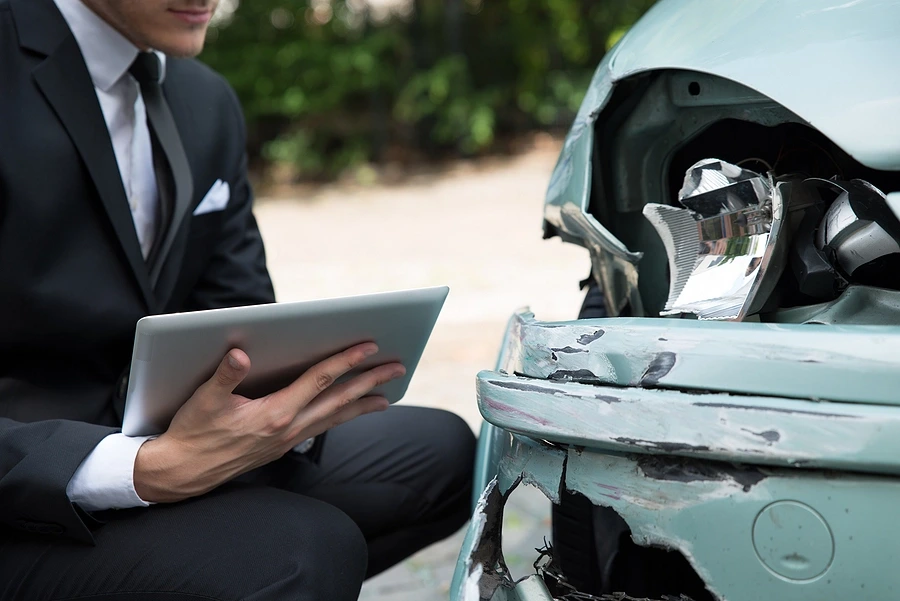Car Accident Lawyer Lyman

After a car accident in Lyman, the road to recovery can be filled with unexpected challenges. From dealing with injuries to managing insurance claims, the stress can quickly become overwhelming. That’s where Langley Law Firm steps in. As your trusted car accident lawyer, we are dedicated to helping you navigate the legal complexities, ensuring you get the compensation you deserve. We believe in providing personalized, attentive service tailored to your needs. Call us today at (864) 667-6144 for a free consultation, and let us help you take control of your situation with confidence.
Determining Liability in Rear-End Collisions in Lyman
Rear-end collisions are one of the most common types of car accidents on the road. In many cases, these accidents are straightforward, where the vehicle behind is clearly at fault. However, liability in rear-end collisions is not always as clear-cut as it might seem. If you’ve been involved in a rear-end crash in Lyman, you may be wondering who is responsible for the damages.
The General Rule: The Driver Behind is Usually at Fault
In most rear-end accidents, the driver of the vehicle that strikes the one in front is presumed to be at fault. This is based on the simple rule of driving: a driver must maintain a safe following distance to be able to stop in time if the car ahead suddenly slows or stops. If the rear vehicle is unable to stop in time and causes a collision, the driver behind is often considered negligent.
However, there are exceptions to this general rule. In some cases, the driver in front may share some or all of the blame. Let’s take a closer look at the circumstances that can influence liability in rear-end collisions.
Common Reasons a Rear-End Collision Occurs
Understanding the reasons behind rear-end collisions can shed light on why liability isn’t always black and white. Some common causes include:
- Tailgating: If the driver in the rear vehicle is following too closely, it reduces their ability to react in time to avoid a collision. Tailgating is one of the most common causes of rear-end accidents.
- Distracted Driving: Texting, talking on the phone, or engaging in other distractions while driving can prevent a driver from noticing when traffic slows down, leading to rear-end accidents.
- Weather Conditions: Inclement weather, like rain, fog, or snow, can reduce visibility and road traction, making it harder for drivers to stop quickly. However, even in bad weather, drivers are still required to adjust their speed to suit the conditions.
- Sudden Stops: The driver in front may stop unexpectedly, such as in cases of road debris or an animal crossing the road. While the rear driver should be alert and ready to stop, the suddenness of the stop can complicate liability.
- Brake Failure: If a vehicle’s brakes fail, the driver may be unable to stop in time to avoid a collision. While this may not necessarily absolve the driver of liability, it could be an important factor when investigating the cause of the accident.
When the Driver in Front May Be at Fault
While the rear driver is typically responsible for the collision, there are certain situations where the driver in front may share or bear full responsibility for the crash. These include:
- Reversing into Traffic: If the car in front suddenly reverses into traffic or unexpectedly backs into the rear vehicle, they may be considered at fault. In these cases, the rear driver may not have had any time to react or avoid the collision.
- Brake Checking: If the driver in front abruptly slams on their brakes without a legitimate reason, this is often referred to as “brake checking.” This action may be intentional or out of frustration, but in either case, it can cause a rear-end accident. If this behavior is proven, the driver in front may be held liable.
- Defective Tail Lights: If a car’s tail lights or brake lights are not functioning properly, it can be difficult for the driver behind to know when the car is slowing or stopping. In this case, the driver in front may be at fault for not ensuring their vehicle was in proper working condition.
- Sudden Lane Changes or Turns: If the driver in front abruptly changes lanes or turns without signaling, it can cause confusion for the rear driver, who may not have enough time to react. This can be especially problematic if the change in direction happens unexpectedly.
Comparative Fault in Lyman
Lyman, like most states, follows a system called comparative fault, which means that multiple parties can share liability for an accident. This is important because even if the rear driver is primarily at fault, the driver in front could still share some blame for the crash.
For example, if the driver in front was not maintaining a proper speed or failed to signal a lane change, they might be found partially responsible for the accident. In this case, liability would be divided between the two drivers based on the degree of fault each party had in the accident.
In comparative fault cases, the compensation awarded to the injured party may be reduced in proportion to their share of the blame. For example, if you are found to be 20% responsible for the accident, your compensation would be reduced by 20%. This is why it’s crucial to thoroughly investigate the circumstances of the crash to determine the full extent of liability.
How a Car Accident Lawyer Can Help
If you’ve been injured in a rear-end collision in Lyman, it’s important to consult with an experienced car accident lawyer to protect your interests. An attorney can help you understand your rights, investigate the accident, and gather the necessary evidence to build a strong case.
Your lawyer will work to determine who was at fault for the accident by reviewing police reports, speaking with witnesses, and analyzing any available video footage. They can also help you negotiate with insurance companies to ensure you receive fair compensation for your medical bills, lost wages, and pain and suffering.
Additionally, if you’re dealing with a comparative fault situation, your attorney will help advocate for you, aiming to minimize your percentage of liability and maximize the compensation you’re entitled to.
Steps to Take After a Rear-End Collision in Lyman
If you’ve been involved in a rear-end accident, there are several steps you should take to protect your legal rights:
- Call the police: Always report the accident to the authorities, even if it seems minor. A police report can serve as an important piece of evidence when determining fault.
- Exchange information: Be sure to get the names, contact information, and insurance details of all parties involved in the crash.
- Take photos: Document the accident scene, including vehicle damage, skid marks, and any visible injuries. Photos can provide crucial evidence in a liability dispute.
- Seek medical attention: Even if you don’t feel injured immediately, it’s important to see a doctor. Some injuries, such as whiplash, may not show symptoms right away.
- Consult a car accident lawyer: Before accepting any settlement offers from insurance companies, it’s wise to speak with a lawyer who can advise you on your options and ensure you receive the full compensation you deserve.
When Accidents Happen, Langley Law Firm is Here for You
At Langley Law Firm, we understand how life can be turned upside down after a car accident. You don’t have to face the challenges alone. Our team of car accident lawyers is here to ensure your rights are protected and your recovery is our top priority. From negotiating with insurance companies to advocating for you in court, we’ll handle every aspect of your case with the attention it deserves. Don’t let the stress of an accident take control—reach out to Langley Law Firm today at (864) 667-6144 for a free consultation. Let us help you get the compensation you deserve and move forward with confidence.
